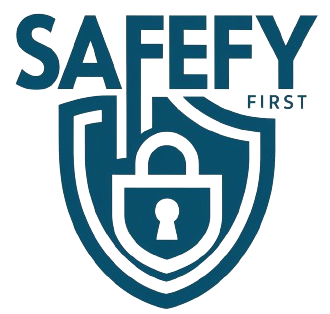
Child safety is of utmost importance for every parent or guardian. Creating a safe environment at home is crucial to prevent accidents and ensure the well-being of children.
there’s nothing more important than ensuring the safety and well-being of your child. One of the most critical steps in achieving this is childproofing your home. According to the American Academy of Pediatrics, unintentional injuries are the leading cause of death and disability among children, and many of these injuries occur in the home.
In this comprehensive guide, we will take you through a room-by-room approach to childproofing your home, providing practical tips and suggestions to keep your little ones safe.
Living Room
Secure Furniture and Appliances
- Anchor heavy furniture like bookshelves and TV stands to the wall to prevent tipping.
- Use furniture straps to secure televisions, ensuring they are out of reach of children.
- Keep cords from blinds and curtains out of reach, using cord shorteners or tie-ups.
Cover Electrical Outlets and Cords
- Install outlet covers or safety plugs to prevent children from inserting objects into sockets.
- Use cord organizers or covers to keep electrical cords tucked away and out of sight.
Soften Sharp Edges and Corners
- Apply corner guards to tables, countertops, and other furniture with sharp edges.
- Use edge protectors on fireplace hearths to prevent injuries.
Kitchen
Secure Cabinets and Drawers
- Install childproof locks or latches on cabinets and drawers containing cleaning supplies, sharp objects, or hazardous materials.
- Store heavy items on lower shelves to avoid tipping.
Stove and Oven Safety
- Use stove knob covers to prevent children from accidentally turning on burners.
- Install stove guards or safety gates to keep children away from hot surfaces.
- Use oven locks to prevent access to the oven door.
Store Cleaning Products Safely
- Keep cleaning products in locked cabinets or high shelves, out of children’s reach.
- Use childproof locks on trash cans to prevent access to potentially harmful items.
Bedrooms
Secure Furniture and Windows
- Anchor dressers, bookshelves, and other furniture to the wall to avoid tipping accidents.
- Install window guards or window stops to prevent falls.
Choose Safe Bedding
- Use a firm mattress and a well-fitted crib sheet for infants.
- Avoid placing pillows, stuffed animals, or blankets in the crib to reduce the risk of suffocation.
- Keep Small Objects Out of Reach
- Ensure small toys, coins, or other small objects are kept away from young children to prevent choking hazards.
- Regularly inspect the bedroom floor for any small items that may have fallen.
Bathroom
Secure Medications and Cleaning Products
- Store medications and cleaning products in locked cabinets, out of reach of children.
- Keep the toilet lid closed and consider using a toilet lock to prevent drowning hazards.
Adjust Water Temperature
- Set the water heater to a maximum temperature of 120°F (49°C) to prevent scalding injuries.
- Use a bathtub thermometer to ensure the water is at a safe temperature before bathing children.
Install Non-Slip Mats and Grab Bars
- Place non-slip mats in the bathtub or shower to prevent slips and falls.
- Install grab bars near the toilet and in the shower for added stability and support.
Outdoor Areas
Secure Gates and Fences
- Install sturdy gates at the top and bottom of stairs to prevent falls.
- Ensure fences are in good condition and free from any gaps or openings.
Remove Hazards from the Yard
- Keep gardening tools, chemicals, and other hazardous materials locked away or out of reach.
- Check the yard regularly for any sharp objects, broken glass, or potential choking hazards.
Supervise Outdoor Play
- Always supervise children when they are playing outside to ensure their safety.
- Set up age-appropriate play equipment and maintain a safe play area.
Conclusion
Childproofing your home is a vital step in ensuring the safety and well-being of your children. By following this room-by-room guide, you can identify potential hazards and take the necessary steps to make your home a safe environment for your little ones. Remember, childproofing is an ongoing process, so regularly assess and update safety measures as your child grows and develops.
FAQs
1. When should I start childproofing my home?
It’s best to start childproofing your home before your baby starts crawling or walking. However, it’s never too late to make your home safer for your child. Begin by focusing on the areas where your child spends the most time, such as the living room, kitchen, and their bedroom.
2. What are some common choking hazards in the home?
Common choking hazardsinclude small toys, coins, buttons, batteries, and food items like grapes, nuts, and popcorn. It’s important to keep these small objects out of reach of young children to prevent choking incidents.
3. How often should I reassess and update my childproofing measures?
It’s recommended to reassess and update your childproofing measures regularly, especially as your child grows and develops new skills. As they become more mobile and curious, they may be able to reach previously inaccessible areas or find new ways to get into potential hazards. Stay vigilant and make adjustments as needed to ensure ongoing safety.
